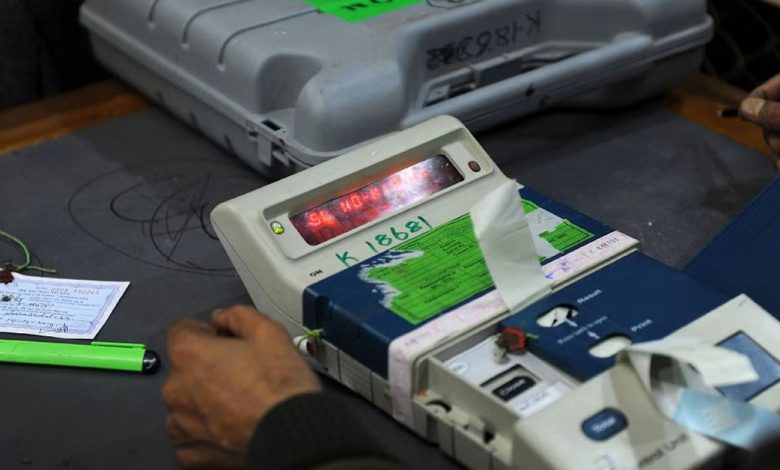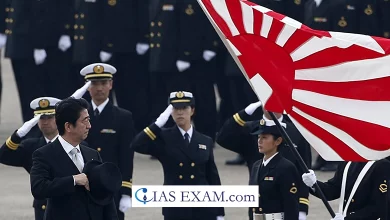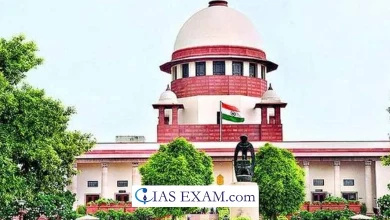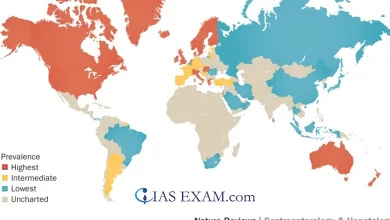Daily Current Affairs for UPSC
Remote Voting for Domestic Migrants
Topic- Government Policies and Interventions [GS Paper-2]

Context- Recently, the Election Commission (EC) has announced that it is ready to pilot remote voting for domestic migrants.
Key Highlights
- The Election Commission has developed a prototype for a Multi-Constituency Remote Electronic Voting Machine (RVM) that can handle multiple constituencies from a single remote polling booth.
- It is particularly based on the currently used EVM system.
- The VVPAT system is expected to work along similar lines with the new technology.
- The RVM is developed with the assistance of Bharat Electronics Limited (BEL) and the Electronics Corporation of India Limited (ECIL).
Characteristics & functioning:
- The RVMs are stand alone, non-networked systems that will effectively be providing the voter the same experience as currently used EVMs.
- The RVM will be set up in remote locations outside the state under the same conditions as current polling booths.
Single Remote Ballot Unit for multiple constituencies:
- The unique characteristic of RVMs is that a single Remote Ballot Unit (RBU) will be able to cater to multiple constituencies (as many as 72) by using a “dynamic ballot display board” instead of the usual printed paper ballot sheet on EVMs.
Ballot Unit Overlay Display:
- The Ballot Unit Overlay Display (BUOD) will show the requisite candidates based on the constituency number read on the Constituency card of the voter.
- A barcode scanning system will be used to read constituency cards.
The voting process
- After verifying a voter’s identity, their constituency card will be read with a public display showing the constituency details and the candidates.
- This will be displayed privately, on the BUOD in the RVM’s RBU.
- The voter will then vote and every vote will be stored constituency-wise in the control unit of the voting machine.
Significance:
- Pilot remote voting for domestic migrants, so they don’t need to travel back to their home states to vote.
- This process comes on the back of EC’s acknowledgement of migration-based disenfranchisement.
- EC hopes that through the move, it will be able to boost voter turnout and strengthen India’s democratic process.
Issue of migration-based disenfranchisement
- While registered voters do not end up voting for several reasons, domestic migration is a major contributor in the Indian context.
Migrant population:
- As per the datas of 2011 census (the numbers will have risen since then), there are nearly 45.36 crore migrants in India (both intra and inter state) – amounting to approximately 37 per cent of the country’s population.
- Migration can be driven by a certain different reasons from marriage to natural disaster to employment.
Disenfranchisement:
- Voters those who are absent from their home locations on the day of polling, even if they wish to vote, are unable to travel to vote due to various reasons.
- This means that there is a large chunk of the population which is denied its franchise due to exigencies of work or lack of resources to travel.
- This goes directly against the EC’s “No voter left behind” target.
Election Commission’s Committee:
- EC had established a “Committee of Officers on Domestic Migrants”.
- The committee submitted a report in late 2016 after considering various possible solutions such as internet voting, proxy voting, early voting and postal ballots for the migrant workers.
- However, all of these ideas were not approved due to certain reasons such as
- the lack of secrecy of the vote,
- the lack of sanctity of one person one vote principle,
- issues of accessibility for unlettered voters, etc.
Proposal of Remote Electronic Voting Machine (RVM):
- Thus, a technological solution was proposed (RVM) that relies on the creation of a robust electoral roll and identification mechanisms (to stop duplicate voting), and allow voters to vote remotely, in a safe and controlled environment.
Constitutional backing:
- Article 326 provides that Elections to the House of the People and to the Legislative Assembly of every State should be on the basis of adult suffrage.
- Every citizen of India not less than eighteen years of age on such date as may be fixed on that behalf by law and is not otherwise disqualified and shall be entitled to be registered as a voter at any such election.
- Remote Voting can also help us move closer toward this.
Challenges
-
- Non-uniformity:
- Migrants are not a uniform and defined group, with fluid identities, locations and situations.
- In the context of the transience of migration in India, the issue for the EC is to create an inclusive definition of migrants which at the same time does not open the system up to misuse.
- Non-uniformity:
- Eligibility & Qualification:
-
-
- EC has yet neither decided upon the eligibility of migrant voters nor the duration that a migrant has to stay outside the home to qualify for such facilities.
-
- Disputable nature of EVMs:
-
-
- As several countries reject EVMs for paper-based ballots, this move has the potential to raise further questions on the sanctity of the electoral process itself.
- While the EC claims that RVMs are as secure as currently used EVMs, more technological components are bound to raise further questions.
-
- It may affect elections and campaigning:
-
- Remote voting may theoretically provide an added edge to bigger parties and richer candidates who can campaign across the constituency and also beyond it.
Way Forward
- The existing laws need to be amended to undertake that gigantic exercise which also requires political consensus.





.png)



